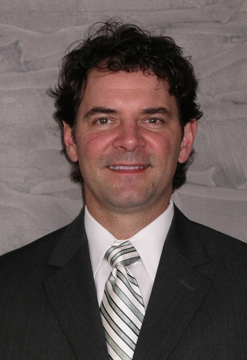
Biggest roadblocks
Spine surgeons find several barriers to achieving coverage and appropriate reimbursement for their cases today. Prior authorizations are more challenging than before, particularly for spinal fusions. Surgeons often find coverage denied for cases that were clearly indicated for coverage in the past and insurance companies are narrowing their coverage policies.
"We have to obtain prior authorization before doing a spinal surgery and the insurance companies are looking for ongoing ways to slow down or interrupt the process for approvals," says Dr. Slosar. "It's not as dramatic as it was three years ago when they threw a blanket of denials in front of every spinal fusion, but now they are trying to slowly and maybe deliberately remove some of the surgical tools from our toolbox."
Tighter restrictions on implant use and biologics make providing care more difficult for surgeons. "It's really on the insurance side, creating an ongoing and persistent burden to the surgeon and patients that matures a little bit every year," says Dr. Slosar.
Another budding trend blocking coverage for spine surgeons is narrow networks. Insurance companies are forming networks based primarily on cost factors and surgeons falling outside those networks — whether they had an in-network contract with the payer or not — will likely see patient volume dip.
"The creation of narrow networks, specifically specialty networks, means there are fewer surgeons on the panel to deliver care to the patient, so if you aren't on the panel your reimbursement will suffer because you won't see the patient," says Dr. Slosar. "Those are a little more like a "stealth denial" compared to the more obvious denial of the surgical request. Surgeons don't know whether they've been de-selected and that effect might take 12 to 18 months to become obvious as their volume declines."
Strategies to overcome obstacles
While taking on reimbursement challenges is difficult, surgeons in various markets are finding ways to navigate this new terrain with bundled payments and providing episodes of care. Many are seeking expert representation to guide them through healthcare reform successfully.
"Spine surgeons would be best served to engage with one of the few existing companies in this space, such as PDP Solutions in Nashville, to begin the process. Ultimately, we will likely see regional specialists collaborate on forming service lines for musculoskeletal care including spine and then go to the insurance companies and request membership in their networks," says Dr. Slosar. "The traditional spine surgeon's office is good at fee-for-service, but there is very little experience with these other alternative payment options."
Data-gathering is another emerging tool important to the surgeon's future. While most surgeons gather data on quality and outcomes, cost data is also important to negotiate within the bundled payment and narrow network structure.
"Most surgeons think of data gathering as clinical outcomes tracking, but at this juncture there is relatively little call for that data from insurers," says Dr. Slosar. "If you want to produce data to convince people to include you in their networks, the best data to show would be cost-effectiveness, without sacrificing clinical results. Eventually we will be asked to produce good outcomes data, but right now it's driven by cost-savings."
Factors to focus on today
In today's evolving healthcare landscape, independent spine surgeons will have to adapt to new bundled payment agreements with insurance companies, hospitals and implant manufacturers.
"It's imperative that the spine surgeon stay out in front of narrowing networks and not get deselected from the networks they currently serve," says Dr. Slosar. "Be willing to engage expert representation and that representation should have experience dealing with hospitals, implant manufacturers and insurance companies because that's where the savings can be realized."
Surgeons, willing to assume some financial risk for the bundled payment must manage patients in a cost-effective manner. They will then have the opportunity to increase their reimbursement per case compared with traditional fee-for-service compensation.
Where trends are headed
The future of healthcare reimbursements is unclear, but based on today's trends we'll likely see continued bundling for complex spine surgery codes, compensating spine surgeons less for performing the same amount of work. "That already happened with several of the interbody fusion models," says Dr. Slosar. "There is also a trend in workers' compensation in certain markets — California for example — to move away from a fee schedule and mirror Medicare rates (RBRVS), which is disconcerting."
Don't expect today's challenges to go away either. "The more successful these bundled payments or episodes of care projects become at actually saving money, the more prevalent those models will become," says Dr. Slosar. "However, I don't see them completely eliminating fee-for-service."
More Articles on Spine Surgery:
5 Spine Surgeons Discuss Spine Surgery Trends in 2014
Minimally Invasive vs. Open Spine Surgery: 6 Key Points
Grow Spine Practice Patient Volume: 8 Key Tactics to Thrive in Today's Healthcare Environment

